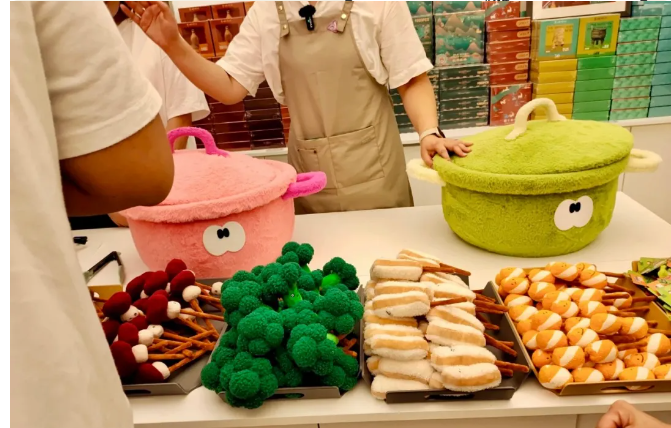In 1955, the opening of Disneyland in Los Angeles marked a significant success for the theme park business model. Subsequently, Disneyland expanded to numerous cities worldwide, becoming a prominent regional landmark and having a substantial impact on urban marketing. Essentially, Disneyland represents a type of consumption space, reflecting a shift in urban development towards a consumption-driven model. Theme parks such as Disneyland and Universal Studios serve as large-scale laboratories for the "consumption experience."
The concept of "Disneyization of Society," introduced by British scholar Alan Bryman, identifies several core principles: theming, hybrid consumption, the commodification of cultural content, and performative labor. These principles are increasingly observable in various social settings.

Recently, a cultural product from the Gansu Provincial Museum in mainland China has gained popularity: a plush toy version of "Gansu-style spicy hotpot." This product features a plush pot on a faux stove, with staff adding faux ingredients and covering it with a lid, creating a playful and immersive experience for visitors.
Following suit, the Shaanxi Provincial Museum in mainland China introduced a plush "meat sandwich," which quickly sold out, leading to comparisons with Jellycat, a renowned plush toy brand.
The sale of plush toys to adults has become a thriving business. The interactive "pretend play" approach in cultural products has sparked a trend where the principles of "Disneyization"—theming, hybrid consumption, commodification, and performative labor—are increasingly evident in urban life. This trend reflects the growing importance of emotional economies within museum settings.
Three common characteristics of these popular museum cultural products are:
1. Theming of Consumption Spaces:
In September 2023, Jellycat opened a "Jellycat Diner" at the FAO Schwarz store in New York, offering a fast-food experience where staff simulate service roles. This immersive approach has boosted the sales of food-themed plush toys, which also appeared in similar setups in Chinese malls. The Gansu Provincial Museum's spicy hotpot plush toy similarly combines "scene, toy, and retail experience," enhancing user engagement.
2. Hybrid Consumption:
This involves integrating various consumption formats within a single setting to increase consumer engagement and prolong their stay. Museums, as primary venues for consumption, naturally encourage longer visitor stays compared to other environments. Engaging with a city's history often leads to a deeper connection with its culture, making visitors more likely to become consumers within that city.
3. Commodification of Cultural Content:
Cultural products featuring museum or city symbols capture tourists' perceptions and experiences of a city, creating lasting memories associated with local culture. Notably, performative labor and sensory engagement are crucial. Transforming employees into performers who convey positive emotions through their actions and expressions enhances the immersive experience.

The plush toys from the Gansu Provincial Museum, such as the "Green Horse," with its distinctive design, have attracted many young buyers. These products serve not only as toys but also as emotional and psychological support.
While the appearance, function, and aesthetics of museum cultural products can be replicated, the interactive purchasing experience and emotional connection with toys provide additional "emotional value." The term "Kidult" describes adults who blur the lines between childhood and adulthood, seeking to regain the joy and freedom of youth. Plush toys offer a straightforward means to access emotional value, addressing anxiety and loneliness.
In a vibrant market for cultural products, interactive purchasing experiences significantly enhance consumer enthusiasm. Visitors to museum gift shops are not merely consumers but participants in the city’s cultural narrative. Incorporating experiential services into city-themed memorabilia enhances audience engagement and effectively promotes urban culture.
© Copyright 2024 Dongguan Jun Ou Toys Co., Ltd. all rights reserved
